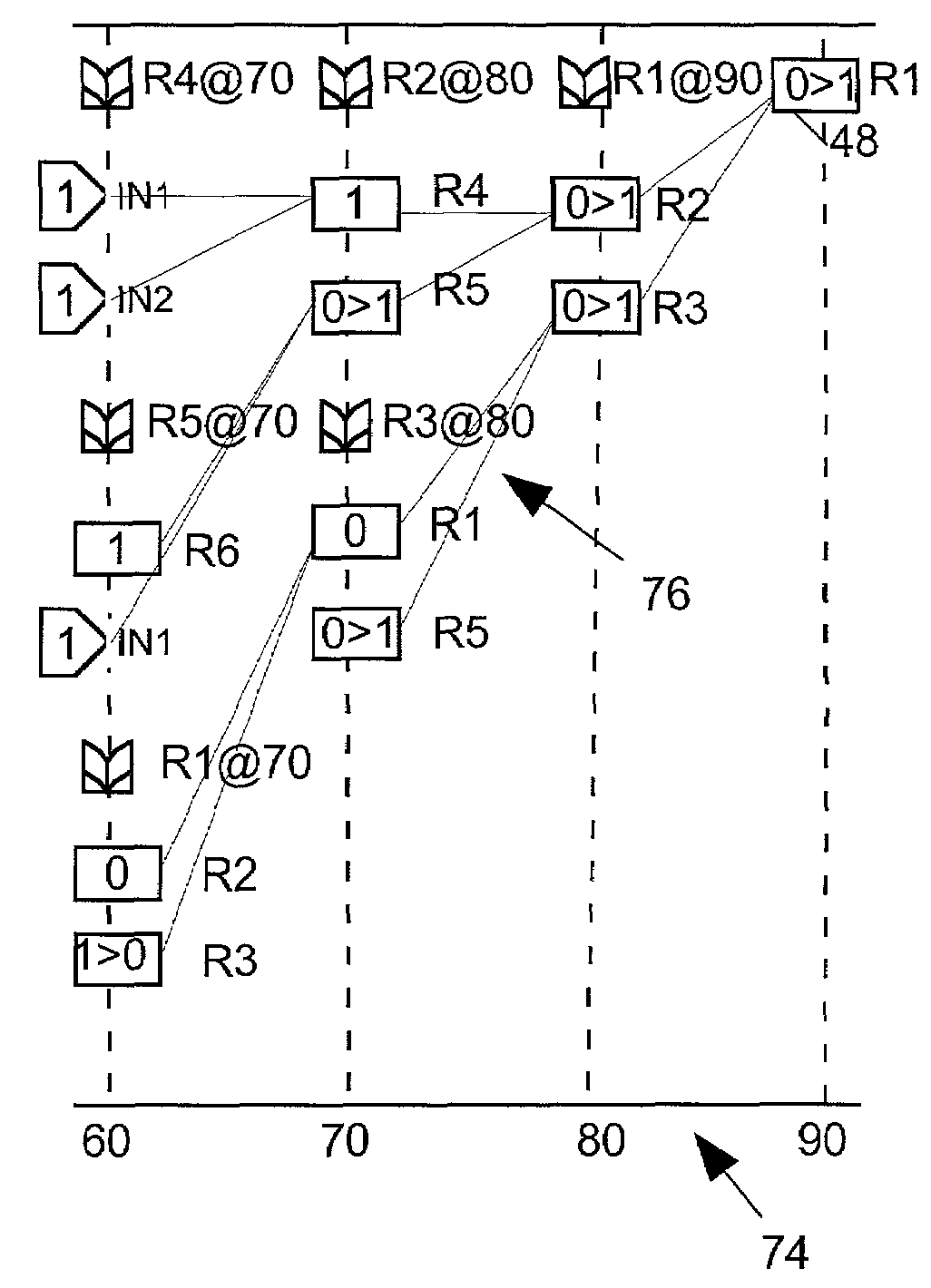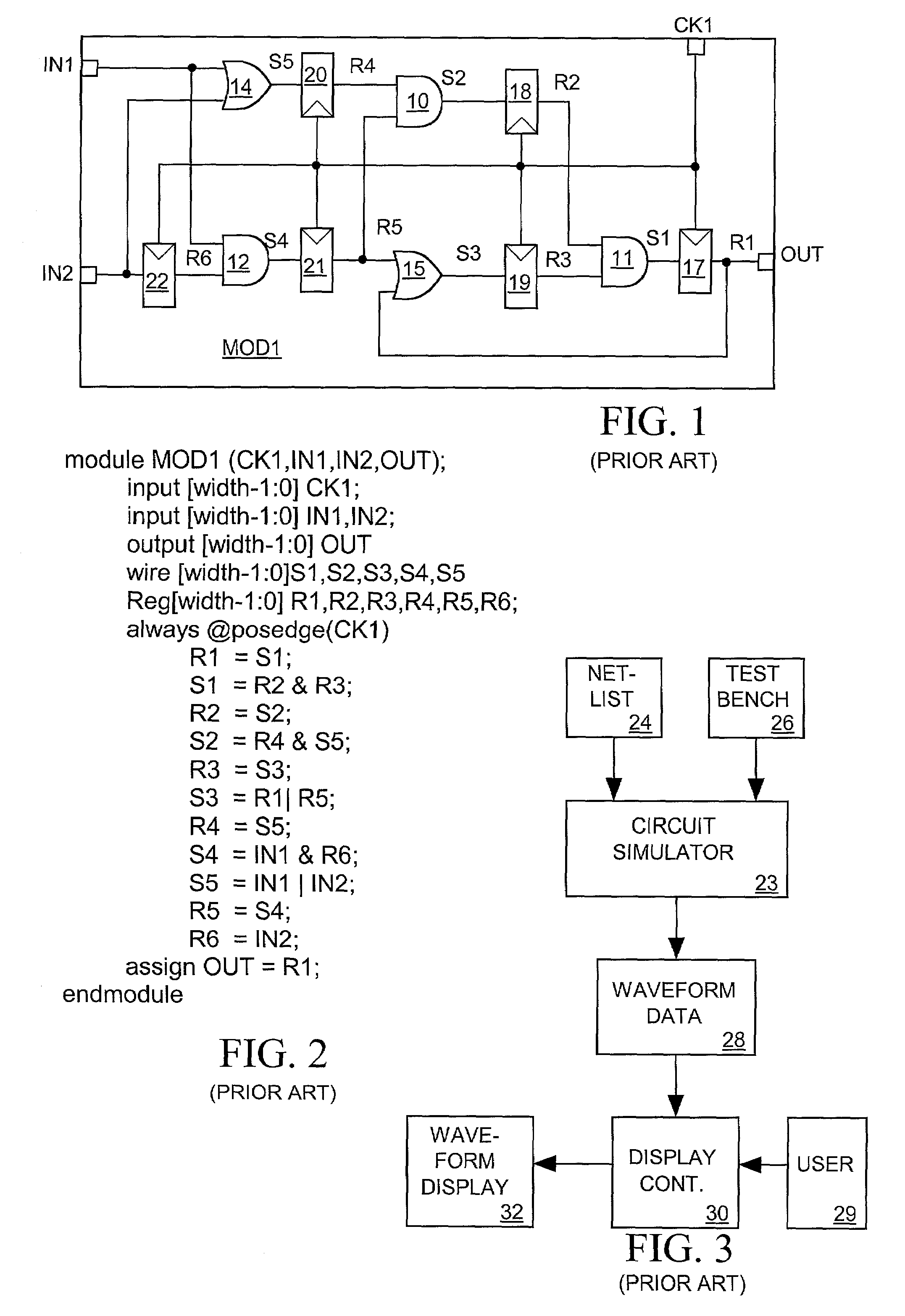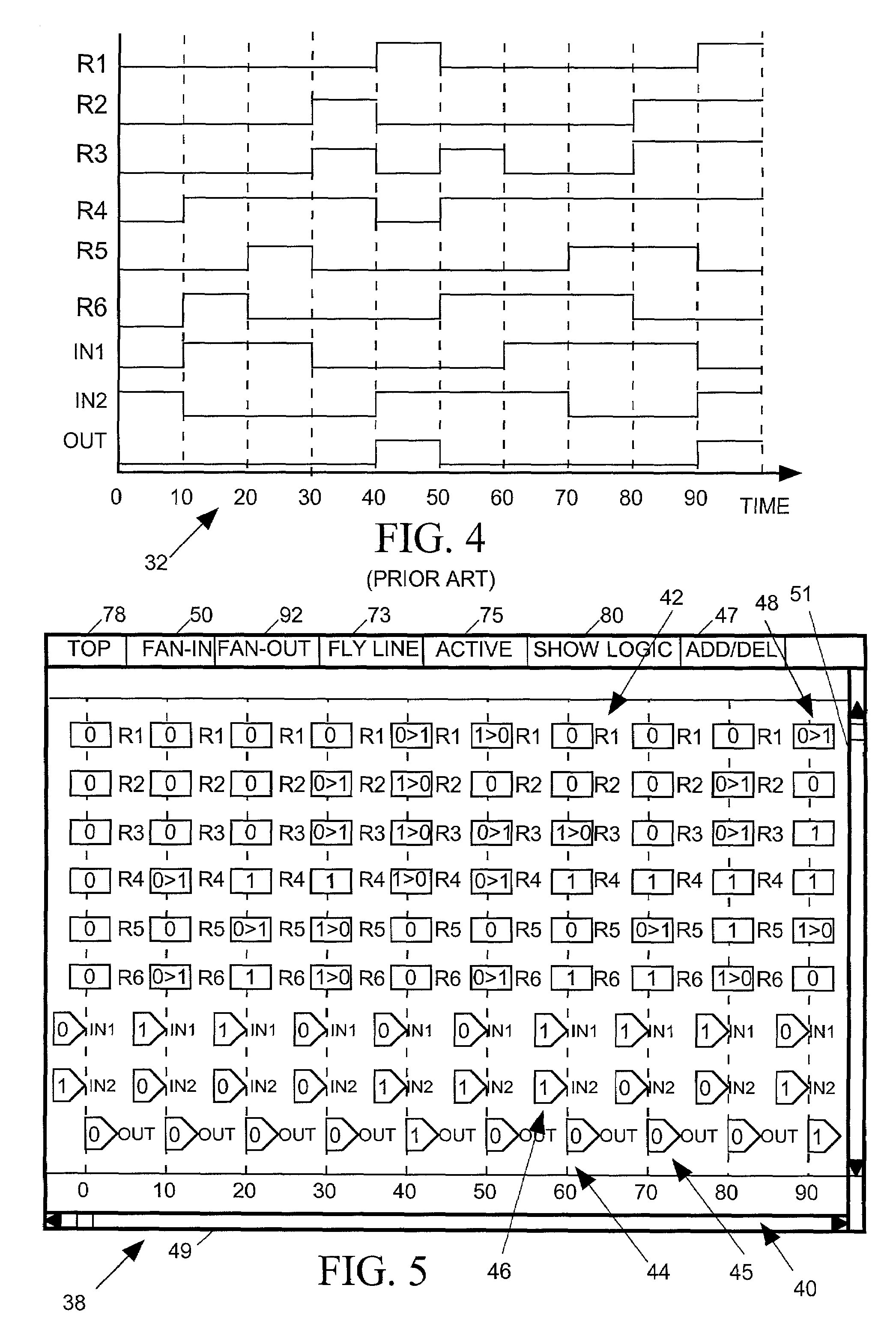System for characterizing simulated circuit logic and behavior
a logic and logic model technology, applied in the field of systems for modeling the logic and behavior of electronic circuits, can solve the problems of difficult analysis, difficult for a design engineer to relate the behavior and logic models, and difficult to figure out how even simple circuits work, etc., to achieve the effect of easy understanding for a design engineer
- Summary
- Abstract
- Description
- Claims
- Application Information
AI Technical Summary
Benefits of technology
Problems solved by technology
Method used
Image
Examples
Embodiment Construction
[0032]Prior art systems for modeling a circuit typically characterize a circuit either in terms of its logic or in terms of the behavior of the signals it produces. Thus in order to determine how a circuit's logic affects the behavior of its signals circuit design engineers have had to correlate two different types of circuit models. The present invention relates to a system for generating and displaying a “temporal schema” model of a circuit in various levels of detail. The temporal schema model incorporates both the logic and behavioral aspects of the circuit, and displays based on the temporal schema model make it easier for viewers to correlate circuit logic and behavior.
[0033]FIG. 1 illustrates a typical prior art schematic diagram modeling the logic of one small module MOD1 of an integrated circuit. The schematic diagram labels the various input (IN1 and IN2), output (OUT), register output signals (R1–R6) and other internal signals (S1–S5) and shows how they are logically rela...
PUM
 Login to View More
Login to View More Abstract
Description
Claims
Application Information
 Login to View More
Login to View More - R&D
- Intellectual Property
- Life Sciences
- Materials
- Tech Scout
- Unparalleled Data Quality
- Higher Quality Content
- 60% Fewer Hallucinations
Browse by: Latest US Patents, China's latest patents, Technical Efficacy Thesaurus, Application Domain, Technology Topic, Popular Technical Reports.
© 2025 PatSnap. All rights reserved.Legal|Privacy policy|Modern Slavery Act Transparency Statement|Sitemap|About US| Contact US: help@patsnap.com



